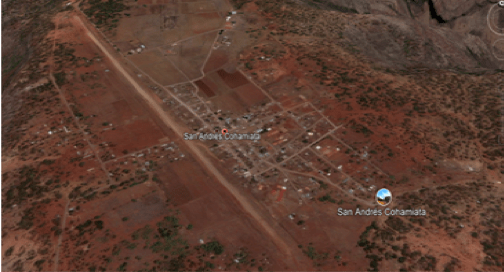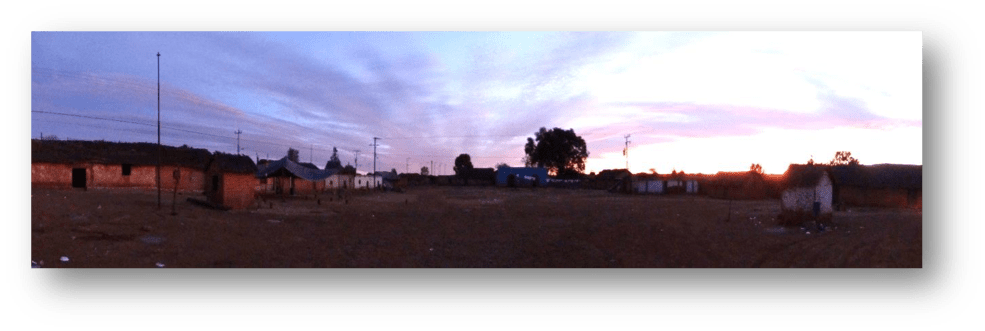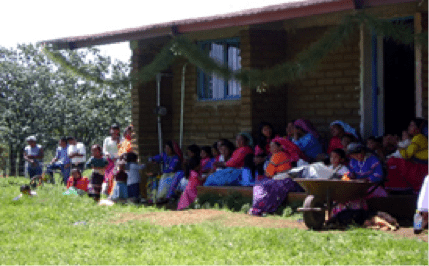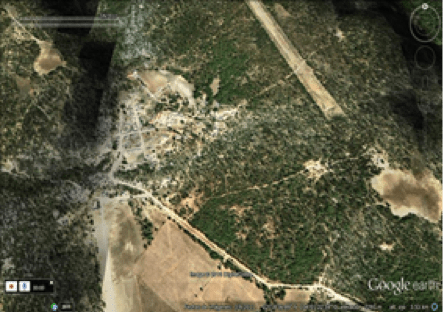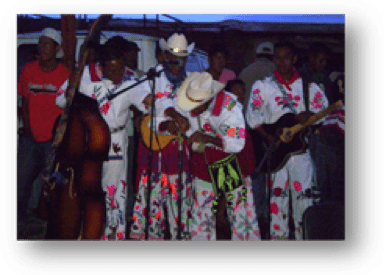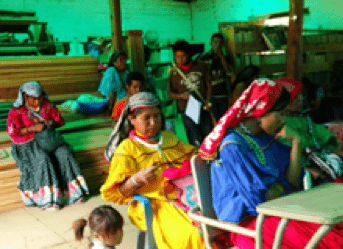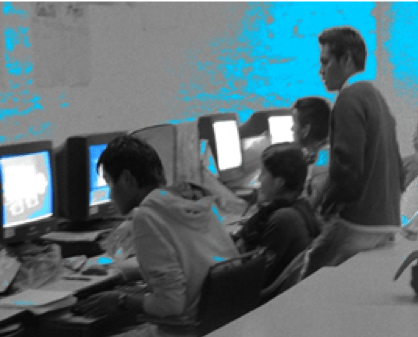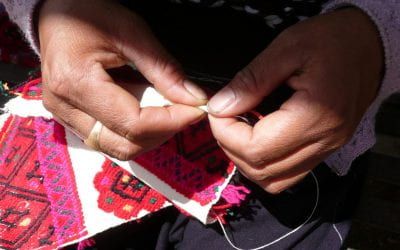Two Wixaritari Communities
One Language and One Culture
I first arrived in the wixárika (huichol) zone north of Jalisco, Mexico, in 1998. The communities didn’t have electricity then, and it was really hard to get there because the roads were simply horrible. You had to go by plane.
My relationship with the zone all began when as a social worker I began to give online high school classes through the Mexican Institute for Adult Education (INEA). Because of that work, I was invited to collaborate in drawing up a curriculum for Intercultural Bilingual High Schools. After I finished a degree in Spanish Literature, and with a relatively long process of training, development and investigation, I went on to do my doctorate with a thesis on the role of the vitality of the mother tongue at the high school level.
I wanted to look at the vitality of the local language in the context of the schools, but first I had to do an ethnographic study of the communities where I worked. On this occasion, I was looking at Tateikie (San Andrés Cohamiata) and ‘Inakwaixitia (Nueva Colonia) and trying to map out the daily interactions of the two languages: wixárika and Spanish. Why these two communities? Because historically they were pioneers in community high schools, with the Intercultural Tatei Yurienaka ‘Iyarieya (now part of the High Schools of Jalisco State) in Tateikie in 2003 and the Community High School Tamatsi Páritsika in Nueva Colonia in 2009.
My fieldwork was divided into two stages, Tateikie from 2005 to 2007 and ‘Inakwaixitia in 2012.
The Socio-Linguistic panorama of Tateikie
San Andrés Cohamita or Tateikie is the communal headquarters and has 16 agencies (one of those spaces in which the population is distributed, made up of several villages and small settlements), eight ceremonial centers and community spaces where the community members gather in their daily lives.
As I wandered along the streets, I observed how the community members speak wixárika almost everywhere in their daily lives, whether it be in the ritual space known as Tuki, the community center, homes of friends and relatives or community gatherings. They reserve Spanish for “official” situations of dealing with municipal, state and federal authorities or for interactions with teiwarixi—mestizos, people outside their community.
In schools, the ecotourism cabins, the offices of agricultural authorities, the civil registry, regional banks or jails (cepu), I found that wixárika was mixed in or alternated with Spanish, but also with some foreign languages such as English, French, Italian and French.
The use of the wixárika and Spanish languages in these situations most often depends on pragmatic factors such as with whom one is talking and the purpose of the communication. If the people they are addressing are familiar with the teiwarixi language and culture, they might alternate or just use one of the languages to open or to hide from the mestizo or foreign person (teiwari).
People who speak only one language are generally older adults. Families generally have one or two seniors who carry on the mother tongue and culture. In the second generation—the parents—bilingualism depends on the contact with the mestizo culture. Youth, adolescents and school-age children are functionally bilingual, and Spanish or their mother tongue is used, depending on the circumstances.
A bilingualism of resistence has risen at the community level. I identified a tendency in which wixárika, the mother tongue, is considered a strategy for cultural communication while Spanish, the second language is seen only as a tool to communicate with the outside world.
Panorama socio-lingüístico of ‘Inakwaxitia
‘Inakwaxitia or Nueva Colonia as an agencia dates back to 1987, with its first agent David Carrillo. Two years later, en 1989, a road was built that communicated the settlement with the closest town, Huejuquilla. The settlement is more than 7,000 feet above sea level and atretches over 10 square miles. The communal headquarters are located in Tuapurie, and the nearest settlement is in Las Latas, some 45 minutes away on foot.
In linguistic terms, residents favor the mother tongue because they speak in the community-oriented environments from a cultural vision.
Another factor reinforcing bilingualism is the migration process of the community members during the winter months has extended toward the United States, where some communicate in Spanish or learn English. Others migrate domestically throughout Mexico, where they use Spanish on a daily basis.
The vitality of wixárika is also gender-based in Nueva Colonia, where the men have more interaction with outsiders than the women, who conserve their tradition of speaking the mother tongue. As the community reaches higher educational levels, women are going to school and use the mother tongue for certain interactions such as chatting with classmates, organizing for different activities, asking questions after class or engaging in team sports.
In addition to older folks, small children also only speak wixárika. Parents speak one or both, depending on their linguistic attitude towards the mother tongue, but the community ties to the language is so strong that the language and culture are inevitably transferred to the third generation. The majority of children, adolescents and youth, the acquisition of wixárika and Spanish has a marked degree of subordination. Wixárika is used during preschool; from fifth grade on, Spanish is much more present in the study materials.
To converse in wixárika is to live in Takiekarie —all its spiritual, essential, cultural, social and linguistic world—with constant reproduction both individually and collectively, and as a spokesperson in the interaction with outsiders. Spanish is limited to a few venues.
And although I observed an incipient bilingualism in most of the community residents, the mother tongue maintains vitality with constant interactions on both a daily and ritual basis. In and of itself, this narrates the process of resistence as a constan ton the part of the community. Although it may undergo continual transformation, wixárika will remain as long as it continues as a functional means of communication in all spheres.
Related Articles
What Two Can Do
English + Español
The majority of the world’s population speaks more than one language. That means, normally, that people communicate through two or more codes to construct complex world views…
Cruzando My Own River
English + Español
Soy hijo de un Indio Chichimeca y una mujer tan blanca que people mistook her for a gringa…
Weaving Lessons
English + Español
Alonso’s mother is hovering over me. Occasionally she takes over, showing by example, counting out each thread, “p’ej” (one), then “cheb… oxeb…” I want to see the whole pattern laid out before…

